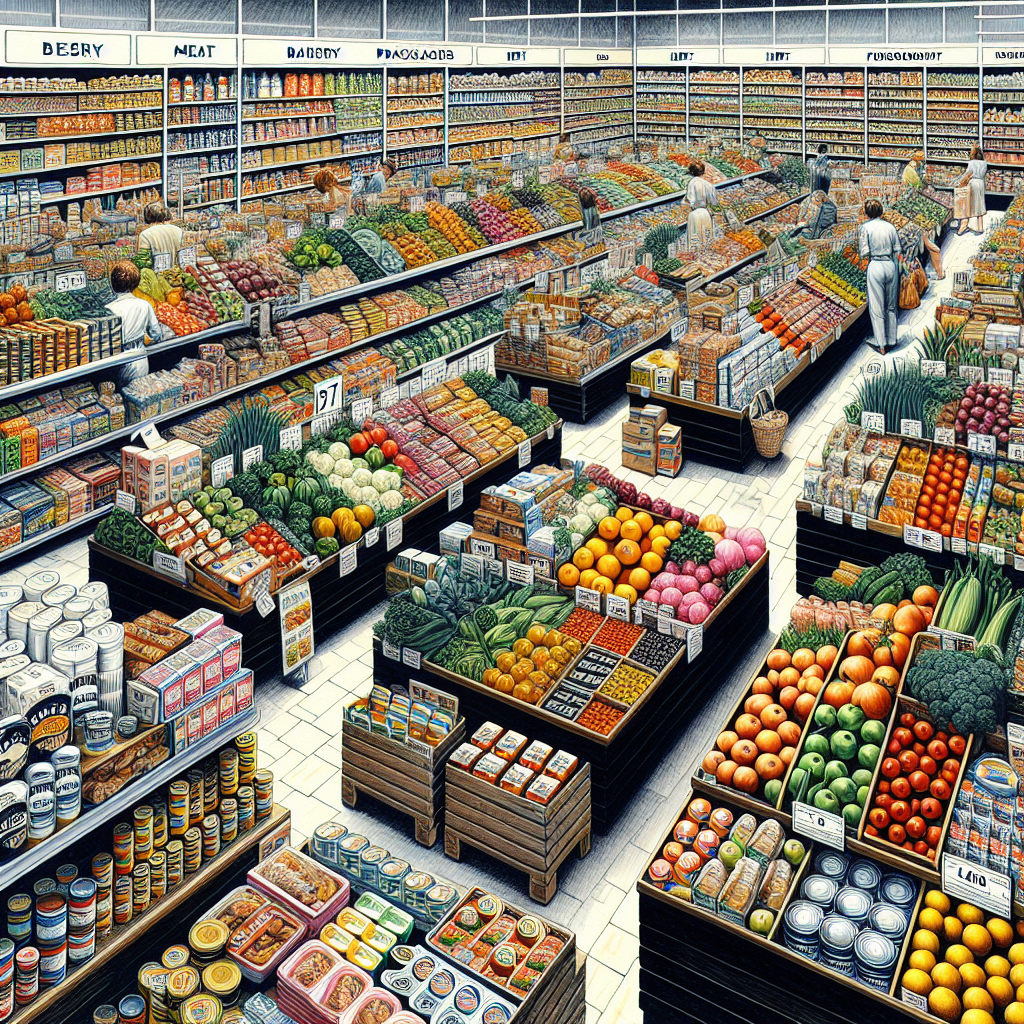Introduction
Big data has revolutionized the way businesses operate in various industries, and the grocery retail sector is no exception. With the increasing demand for personalized shopping experiences, grocery retailers are leveraging big data to better understand their customers’ preferences, behaviors, and shopping habits. This report will delve into how big data is driving personalized grocery shopping, including its impact on the industry, key players, and future trends.
Overview of the Global Grocery Retail Industry
According to a recent report by CulinaryCoverage.com, the global grocery retail industry is projected to reach a value of $12 trillion by 2025. The industry is highly competitive, with major players including Walmart, Amazon, and Alibaba dominating the market share. Traditional brick-and-mortar stores are facing increasing competition from online retailers, prompting them to innovate and adapt to changing consumer preferences.
Market Share and Key Players
Walmart is currently the largest grocery retailer in the world, with a market share of 15%. The company has been investing heavily in technology and data analytics to enhance its customer experience. Amazon, on the other hand, has been rapidly expanding its grocery delivery service, Amazon Fresh, and leveraging its Prime membership program to attract and retain customers. Alibaba, a Chinese e-commerce giant, has also been making significant strides in the grocery retail sector through its online platform, Tmall.
Financial Performance
In 2024, Walmart reported a revenue of $550 billion, a 5% increase from the previous year. The company’s online sales grew by 15%, driven by its investments in e-commerce and digital initiatives. Amazon’s grocery sales reached $30 billion in 2024, representing a 20% increase from the previous year. Alibaba’s grocery sales on Tmall reached $20 billion, demonstrating the platform’s growing popularity among Chinese consumers.
Impact of Big Data on Personalized Grocery Shopping
Big data has enabled grocery retailers to collect and analyze vast amounts of customer data, including purchase history, shopping preferences, and demographic information. By leveraging advanced analytics and machine learning algorithms, retailers can create personalized shopping experiences tailored to individual customers. This includes personalized product recommendations, targeted promotions, and customized pricing strategies.
Personalized Product Recommendations
One of the key benefits of big data in grocery retail is the ability to offer personalized product recommendations based on individual preferences and purchase history. For example, a customer who frequently buys organic produce may receive recommendations for new organic products or recipes. By analyzing past purchasing behavior and preferences, retailers can anticipate customer needs and offer relevant suggestions, increasing customer satisfaction and loyalty.
Targeted Promotions
Big data also enables grocery retailers to target promotions and discounts to specific customer segments based on their shopping habits. For instance, a customer who regularly buys baby products may receive targeted promotions for baby food, diapers, and other related items. By tailoring promotions to individual preferences, retailers can increase sales and customer engagement while reducing marketing costs.
Future Trends in Personalized Grocery Shopping
As technology continues to advance and consumer expectations evolve, the future of personalized grocery shopping is likely to see further innovation and growth. Some key trends to watch out for include the rise of voice-activated shopping assistants, the integration of virtual reality for immersive shopping experiences, and the adoption of blockchain technology for secure and transparent transactions.
Voice-Activated Shopping Assistants
Voice-activated shopping assistants, such as Amazon’s Alexa and Google Assistant, are becoming increasingly popular among consumers for hands-free shopping. These virtual assistants can help customers place orders, create shopping lists, and receive personalized recommendations based on their voice commands. By integrating voice technology with big data analytics, retailers can offer a seamless and convenient shopping experience to their customers.
Virtual Reality Shopping Experiences
Virtual reality (VR) technology has the potential to revolutionize the way consumers shop for groceries by providing immersive and interactive experiences. Retailers can use VR to create virtual stores where customers can browse products, interact with digital displays, and make purchases in a virtual environment. By combining VR with big data analytics, retailers can personalize the shopping experience based on individual preferences and behaviors, enhancing customer engagement and loyalty.
Blockchain Technology for Secure Transactions
Blockchain technology offers a secure and transparent way to conduct transactions in the grocery retail sector. By using blockchain, retailers can ensure the authenticity and traceability of products, reduce fraud and counterfeit goods, and enhance supply chain transparency. Customers can also benefit from blockchain technology by tracking the origins of products, verifying their quality and authenticity, and making informed purchasing decisions based on verified data.
Conclusion
In conclusion, big data is driving personalized grocery shopping by enabling retailers to better understand their customers, offer tailored products and promotions, and create seamless shopping experiences. With the increasing adoption of advanced analytics, machine learning, and emerging technologies, the future of personalized grocery shopping looks promising. Retailers that embrace big data and innovation are well-positioned to meet the evolving needs and preferences of today’s consumers in the competitive grocery retail industry.



